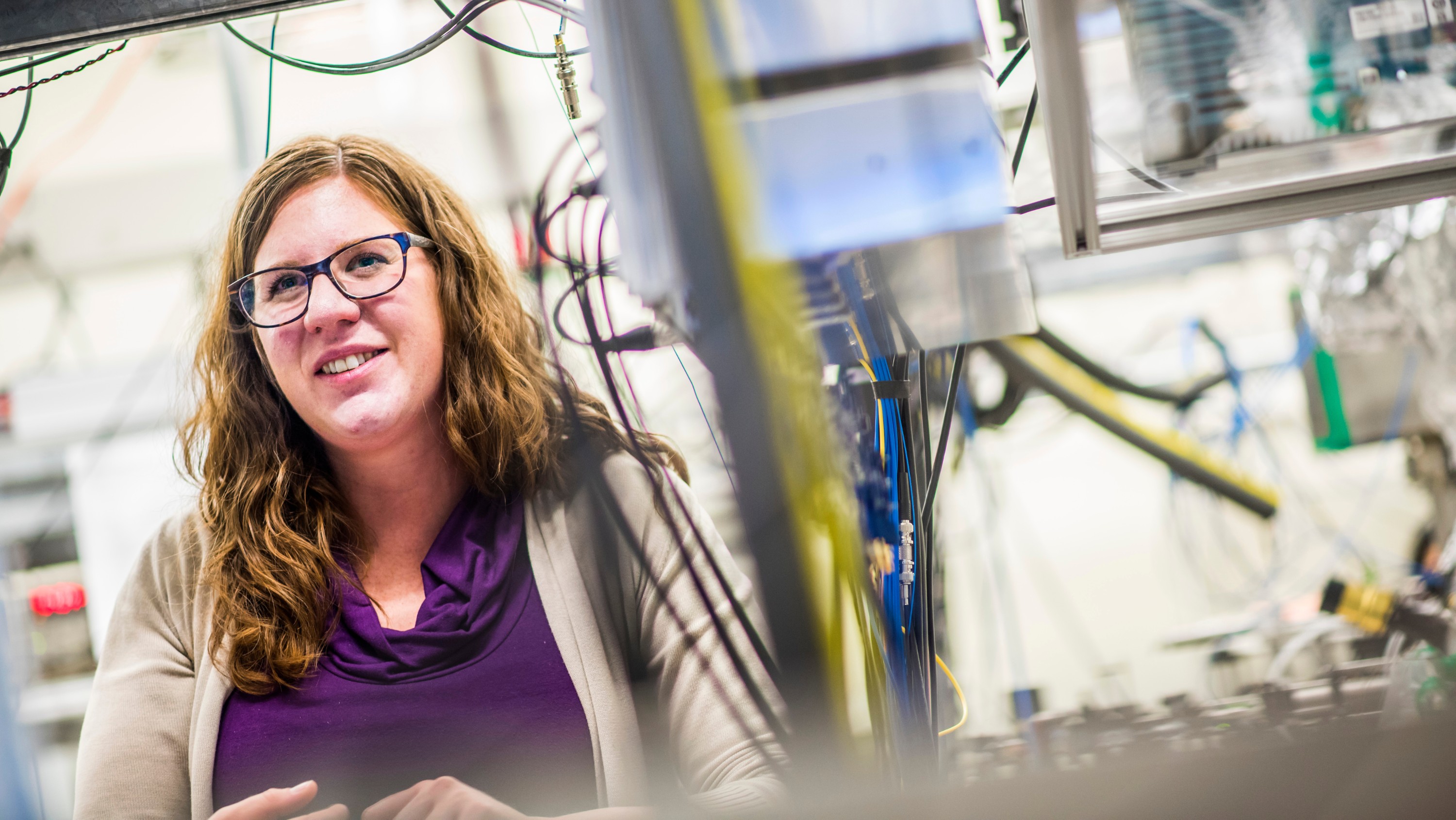Though Lindsay LeBlanc started her studies at the University of Alberta focused on engineering, by her second year the draw of quantum mechanics had pulled her in another direction. It was the way quantum physics balances the fundamental science of studying atoms with the more practical applications that appealed to her.
So LeBlanc switched to the engineering physics program and began what is now a decades-long career as a physicist.
“There’s a nice balance between the theoretical portions, thinking about physics, and then I get to go into the lab and solder things and build equipment,” says LeBlanc, an associate professor in the Department of Physics and Canada Research Chair in Ultracold Gases for Quantum Simulation. She’s one of the key players in a thriving industry in Alberta that continues to grow and attract new talent.
Capitalizing on world-leading expertise
Quantum technology affects the way all of us live in the world. It allows us to measure even the smallest things with more precision, add layers of security to our communications and puzzle through complex problems normal computers aren’t capable of solving. This technology has the potential to reshape virtually every sector including energy, finance, health care, mining and resource extraction, communications, and security and defence.
It’s also valuable for smaller solutions that affect our everyday lives. For example, LeBlanc explains, grocery stores might use quantum computing to find the most time- and fuel-efficient grocery delivery route for a large number of customers. Something like that is complex for a regular computer to handle, but for quantum computing it’s simple.
To help bolster this potential-packed area, the University of Alberta, University of Calgary and University of Lethbridge have formed a Quantum City partnership, creating a hub to accelerate progress in quantum technology. This hub received $23 million in funding from the Government of Alberta announced today.
“The U of A houses world-leading expertise in quantum research and technology, including areas with immediate commercial potential like quantum sensing,” says Elan MacDonald, vice-president of external relations. “The Quantum City partnership accelerates research and its potential to revolutionize industries and create thousands of jobs across Alberta and Canada.”
The funding builds on what is already an area of strength in Alberta. As LeBlanc explains, industry partners like Alberta Innovates have been investing in quantum research for years, and researchers and facilities for this type of work have received provincial support over the past 25 years.
That’s the kind of long-term investment that leads to economic benefits. Several U of A researchers have formed quantum-related spinoff companies to commercialize their discoveries, including John Davis, a professor in the Department of Physics. He helms Zero Point Cryogenics, which is the only North American manufacturer of a unique refrigeration device that uses liquid helium to cool the particles in quantum systems to support quantum computing.
Both LeBlanc and Davis sit on the board of Quantum Alberta, an organization operating since 2014 that brings together academic and industry experts to help elevate quantum research, development and commercialization in Alberta.
“It’s been really good to have that collaboration because we come as a unified front to the province and across Canada,” says LeBlanc. “My lab is definitely working in areas we wouldn't have if we hadn’t had these collaborations.”
These existing collaborations are enhanced by the Quantum City project, which will include a professional master’s training program to help continue attracting top talent to Alberta.
Vast potential
As LeBlanc explains, quantum technology is typically separated into three categories: computing, communications and sensing.
Along with its potential to reshape virtually every industry, the practical applications are equally wide-ranging. For example, in the pharmaceutical industry, quantum computing could allow for complex multi-atom chemical calculations to better predict which drugs would be most effective against certain diseases. Quantum sensing allows those involved in resource extraction to better detect what’s beneath the ground before ever breaking ground, making a necessary process more efficient. Quantum communications could be the key to a faster, safer and more secure quantum internet in the future.
A study commissioned by the National Research Council of Canada predicts that the quantum science and technology sector will create an estimated 209,200 jobs across Canada by 2045. On a provincial level, the investment in the Quantum City project is a key part of the Alberta Technology and Innovation Strategy and Alberta’s Recovery Plan.
“With this investment in Quantum City, we’re making sure our innovators have the support they need to develop products and solutions that benefit people here in Alberta and across the globe, and to create businesses that will transform our industries for the future, contribute to our vibrant communities and support good-paying jobs Albertans count on,” says Doug Schweitzer, Minister of Jobs, Economy and Innovation.
While researchers and industry experts have been watching Alberta’s involvement in quantum technology grow over the years, for the average person, LeBlanc stresses that these advances should be exciting, not intimidating.
“People often say these things like ‘quantum mechanics is so hard, it’s so counterintuitive, we don’t understand anything about it.’ I really hate that because I think it makes it unapproachable,” says LeBlanc. “It’s just science. It’s the way that matter behaves at the atomic scale, and we’ve dug around and figured it out.
“There’s this fear of new technology — people don’t want to adopt new things without understanding it. So we have to make it approachable and give people the little bits of understanding they need to appreciate it.”
